-
 +13 +3
+13 +3The Logic-Defying Double-Slit Experiment Is Even Weirder Than You Thought
Just by observing the process of the experiment, everything changes.
-
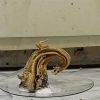 +13 +2
+13 +2The Pharaoh's Serpent's Never Ending Chemical Reaction Is Always So Gross
Even though it looks like the devil is reaching through the ground from underneath the Earth to grab a victim, you can’t look away. Even though it looks like some alien tentacle snake is burning itself and trying to attack you, you can’t help but stare. It’s the Pharaoh’s Serpent (or Black Snake firework) and it’s an old science experiment that’s always so, so gross to look at. The disgusting, growing mutant arm coil thing is actually just Mercury thiocyanate (Hg(SCN)2) getting lit on fire.
-
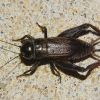 +22 +4
+22 +4Whoops! 12 Tales Of Accidental Brilliance In Science
You nominated 300 cool stories of scientific surprise for Skunk Bear's Golden Mole Award. Our shortlist has it all: circuits painted with light, imperceptible genitalia, and a terrifying frog.
-
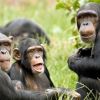 +1 +1
+1 +1We don't know which species should be classed as 'human'
Some say it is culture that makes us human. Others opt for our morality, language, or even our sense of humour. But putting philosophy to one side, what literally makes us human? Surprisingly, there is no official answer. Science has yet to agree on a formal description for our genus, Homo, or our species, sapiens. It's not for lack of trying. There are actually several suggested definitions for the human genus – and an astonishingly broad range of opinions...
-
 +17 +5
+17 +5UK Is Testing Roads That Charge Electric Cars As They Drive
Imagine never having to pull over to fuel your car. This is exactly what Highways England is planning to implement for drivers of electric vehicles. Automobiles would be fitted with wireless technology and then driven on roads with special electromagnetic field generating equipment buried underneath. Trials will be run for 18 months before a decision is made to move the project to public roads, but a similar project in South Korea gives reason for hope.
-
 +18 +3
+18 +3I Am Obsessed With Drawing Super Detailed Art
Oops I think I have an obsession with detail. I have always loved doodling, ask any of my teachers or class-mates and you would have found me drawing on my homework diary or scribbling on the sides of worksheets. Over the years, I have challenged myself to add more detail, be more creative and turn ordinary things into little works of art.
-
 +20 +8
+20 +8Researchers find new phase of carbon, make diamond at room temperature
Researchers from North Carolina State University have discovered a new phase of solid carbon, called Q-carbon, which is distinct from the known phases of graphite and diamond. They have also developed a technique for using Q-carbon to make diamond-related structures at room temperature and at ambient atmospheric pressure in air.
-
 +18 +3
+18 +3What New York Could Look Like in 2020
Manhattan is in the midst of an unprecedented boom in tall buildings. Before 2004, Manhattan was home to 28 skyscrapers 700 feet and taller. Since then, an additional 13 have been built, 15 are under construction, and 19 are proposed—47 more in all. These additions are rapidly—and radically—changing the skyline.
-
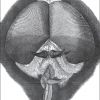 +34 +7
+34 +7Introduction to ‘Origin and evolution of the nervous system’
Utilizing comparative observations, Saint-Hilaire in 1822 was the first to propose that the ventral nervous system of arthropods corresponds to the dorsal nervous system of vertebrates. Since then, studies on the origin and evolution of the nervous system have become inseparable from studies about Metazoan origins and the origins of organ systems.
-
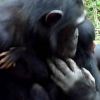 +32 +7
+32 +7For the first time, chimpanzees have been observed caring for a disabled infant
In a stark reminder of just how similar chimpanzees and humans are, Japanese researchers have observed a chimp mother taking care of her “severely disabled” infant in the wild. With the help of one of her other daughters, she was able to help the baby survive for almost two years, despite the fact that it couldn’t walk on its own.
-
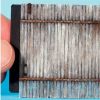 +36 +9
+36 +9Making buildings in foamboard
How to model buildings in foam boards and how to paint them. What incredible craftmanship and eye for detail.
-
 +40 +6
+40 +6Physics duo wins the Nobel Prize for solving longstanding neutrino puzzle
One of tiniest particles in physics has won the biggest prize in science – for the fourth time.
-
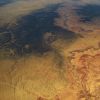 +21 +4
+21 +4Grand Canyon from the Stratosphere! A Space Balloon Story
In June 2013, a group of friends launched a weather balloon a few miles from Tuba City, Arizona. The amazing footage was found two years later by an Arizona hiker. Enjoy the video of our launch preparations, video footage, and some data analysis of the flight.
-
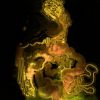 +21 +4
+21 +4On Microbial Symbioses
Our new paper Better Together: Engineering and Application of Microbial Symbioses co-authored by Stephanie G Hays, William G Patric, Marika Ziesack, Neri Oxman and Pamela A Silver is out. Written in parallel to the creation of Mushtari, it considers wholes that are bigger than the sum of their parts by way of microbial symbiosis.
-
 +53 +14
+53 +14Size comparison of the universe 2015
From the quantum size to the cosmic scale, the size comparison of the entire universe will show you how large things really are! This is an update to my previous size comparison video published on the same date in 2013.
-
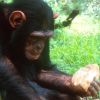 +19 +5
+19 +5Chimpanzees and monkeys have entered the Stone Age
In the rainforests of west Africa, the woodlands of Brazil and the beaches of Thailand, archaeologists have unearthed some truly remarkable stone tools. It's not the workmanship that makes them special. If anything, a casual observer might struggle to even identify them as ancient tools. It's not their antiquity that's exceptional either: they're only about the same age as the Egyptian pyramids.
-
 +1 +1
+1 +1Could we actually live on Mars?
There's a lot of talk these days about when and how we might all move to Mars. But what would it actually be like to live there? Mari Foroutan details the features of Mars that are remarkably similar to those of Earth — and those that can only be found on the red planet. Lesson by Mari Foroutan, animation by Nick Hilditch.
-
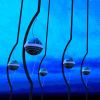 +31 +8
+31 +8The Huge, Pricey Detectors That Capture Tiny Neutrinos
A roundup of some of the super-elaborate—and super-expensive—detectors physicists use to study neutrinos.
-
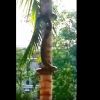 +16 +2
+16 +2How Do Snakes Climb Trees?
As children, we saw the mean Kaa slithering about in trees in Jungle Book - but did you ever wonder how a huge and heavy animal devoid of limbs could could climb up a tree trunk in the first place? The following video posted on YouTube by Cosmopolitans clears the mystery up.
-
 +29 +3
+29 +3Why do we intuitively believe we have free will?
Free will experiments may not explain whether we are in charge of our destinies – but they can nevertheless reveal just how little we know about our own minds, says Tom Stafford.
Submit a link
Start a discussion




















